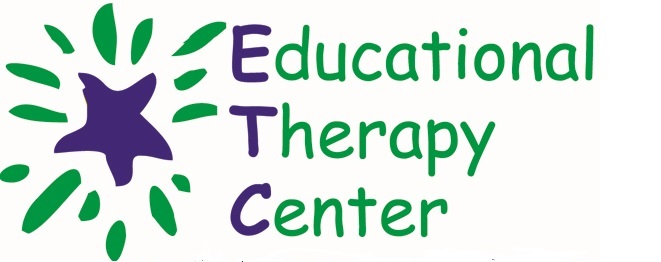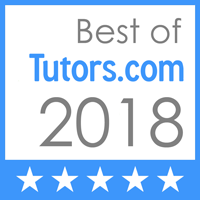ORTON-GILLINGHAM APPROACH
OVERVIEW of the Orton-Gillingham Approach
Orton-Gillingham is an instructional approach intended primarily for use with persons who have difficulty with reading, spelling, and writing of the sort associated with dyslexia. It is most properly understood and practiced as an approach, not a method, program, system or technique. In the hands of a well-trained and experienced instructor, it is a powerful tool of exceptional breadth, depth, and flexibility.
The essential curricular content and instructional practices that characterize the Orton-Gillingham Approach are derived from two sources: first from a body of time-tested knowledge and practice that has been validated over the past 70 years, and second from scientific evidence about how persons learn to read and write; why a significant number have difficulty in doing so; how having dyslexia makes achieving literacy skills more difficult; and which instructional practices are best suited for teaching such persons to read and write.
The approach is so named because of the foundational and seminal contributions of Samuel T. Orton and Anna Gillingham. Samuel Torrey Orton (1879-1948) was a neuropsychiatrist and pathologist. He was a pioneer in focusing attention on reading failure and related language processing difficulties. He brought together neuroscientific information and principles of remediation. As early as 1925 he had identified the syndrome of dyslexia as an educational problem. Anna Gillingham (1878-1963) was a gifted educator and psychologist with a superb mastery of the language. Encouraged by Dr. Orton, she compiled and published instructional materials as early as the 1930s which provided the foundation for student instruction and teacher training in what became known as the Orton-Gillingham Approach.
The Orton-Gillingham Approach is most often associated with a one-on-one teacher-student instructional model. Its use in small group instruction is not uncommon. A successful adaptation of the approach has demonstrated its value for class-room instruction. Reading, spelling and writing difficulties have been the dominant focus of the approach although it has been successfully adapted for use with students who exhibit difficulty with mathematics.
The Orton-Gillingham Approach always is focused upon the learning needs of the individual student. Students with dyslexia need to master the same basic knowledge about language and its relationship to our writing system as any who seek to become competent readers and writers. However, because of their dyslexia, they need more help than most people in sorting, recognizing, and organizing the raw materials of language for thinking and use. Language elements that non-dyslexic learners acquire easily must be taught directly and systematically.
WHAT IS ORTON-GILLINGHAM?
https://www.ortonacademy.org/resources/what-is-the-orton-gillingham-approach/
ORTON-GILLINGHAM APPROACH
The Orton-Gillingham Approach has been rightfully described as language-based, multisensory, structured, sequential, cumulative, cognitive, and flexible. These characteristics can be easily amplified and extended as they are in the following attributes.
PERSONALIZED
Teaching begins with recognizing the differing needs of learners. While those with dyslexia share similarities, there are differences in their language needs. In addition, individuals with dyslexia may possess additional problems that complicate learning. Most common among these are attention deficit disorder (ADD) or attention deficit disorder with hyperactivity (ADHD).
MULTISENSORY
It uses all the learning pathways: seeing, hearing, feeling, and awareness of motion, brought together by the thinking brain. The instructor engages in multisensory teaching to convey curricular content in the most understandable way to the student. The teacher also models how the student, by using these multiple pathways, can engage in multisensory learning that results in greater ease and success in learning.
DIAGNOSTIC AND PRESCRIPTIVE
An Orton-Gillingham lesson is both diagnostic and prescriptive. It is diagnostic in the sense that the instructor continuously monitors the verbal, nonverbal, and written responses of the student to identify and analyze both the student’s problems and progress. This information is the basis of planning the next lesson. That lesson is prescriptive in the sense that will contain instructional elements that focus upon the resolution of the student’s difficulties and that build upon the student’s progress noted in the previous lesson.
DIRECT INSTRUCTION
The teacher presentations employ lesson formats which ensure that the student approaches the learning experience understanding what is to be learned, why it is to be learned, and how it is to be learned.
SYSTEMATIC PHONICS
It uses systematic phonics, stressing the alphabetic principle in the initial stages of reading development. It takes advantage of the sound/symbol relationships inherent in the alphabetic system of writing. Spoken words are made up of individual speech sounds, and the letters of written words graphically represent those speech sounds.
APPLIED LINGUISTICS
It draws upon applied linguistics not only in the initial decoding and encoding stages of reading and writing, but in more advanced stages dealing with syllabic, morphemic, syntactic, semantic, and grammatic structures of language and our writing system. At all times the Orton-Gillingham Approach involves the student in integrative practices that involve reading, spelling, and writing together.
LINGUISTIC COMPETENCE
It increases linguistic competence by stressing language patterns that determine word order and sentence structure and the meaning of words and phrases. It moves beyond this to recognizing the various forms that characterize the common literary forms employed by writers.
SYSTEMATIC AND STRUCTURED
The teacher presents information in an ordered way that indicates the relationship between the material taught and past material taught. Curricular content unfolds in linguistically logical ways which facilitates student learning and progress.
SEQUENTIAL, INCREMENTAL, AND CUMULATIVE
Step by step learners move from the simple, well-learned material to that which is more and more complex. They move from one step to the next as they master each level of language skills.
CONTINUOUS FEEDBACK AND POSITIVE REINFORCEMENT
The approach provides for a close teacher-student relationship that builds self-confidence based on success.
COGNITIVE APPROACH
Students understand the reasons for what they are learning and for the learning strategies they are employing. Confidence is gained as they gain in their ability to apply newly gained knowledge and knowledge about how to develop their skills in reading, spelling, and writing.
EMOTIONALLY SOUND
Students’ feelings about themselves and about learning are vital. Teaching is directed toward providing the experience of success. With success comes increased self-confidence and motivation.
The basic purpose of everything that is done in the Orton-Gillingham Approach, from recognizing words to composing a poem is assisting the student to become a competent reader, writer and independent learner.



